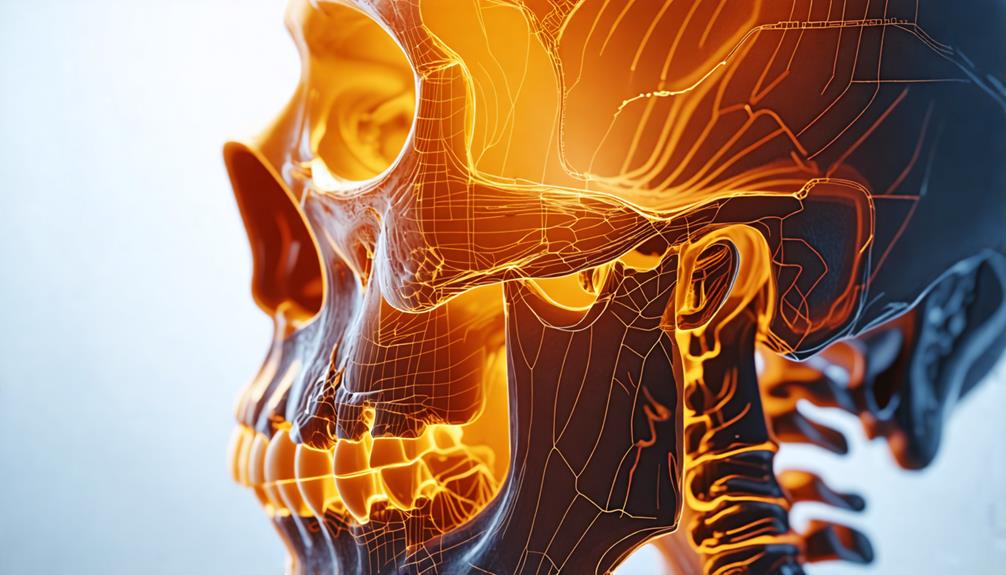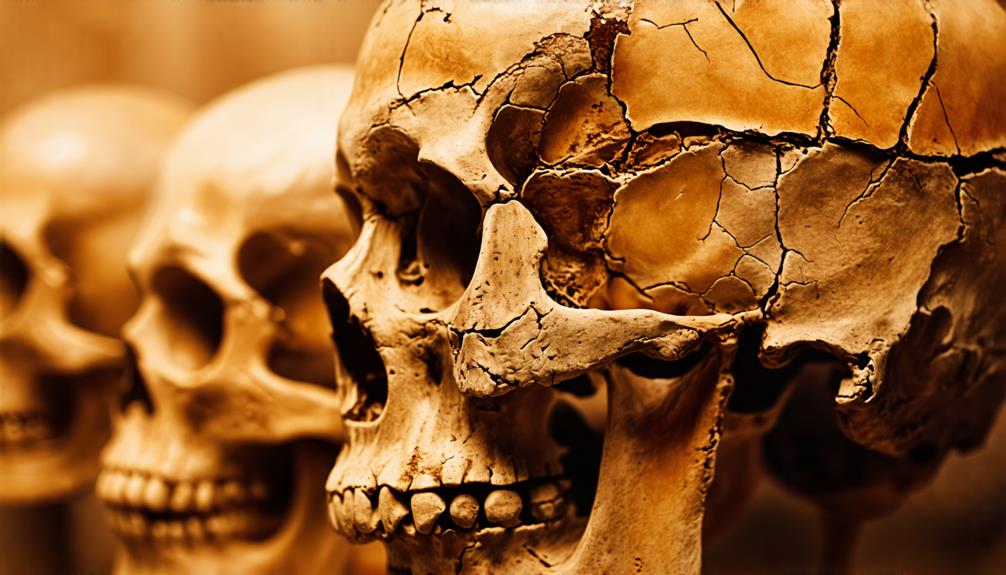You've probably heard that your bones stop growing when you reach adulthood, but that's not entirely true for your skull. In fact, your cranium continues to undergo subtle changes throughout your life. While the most dramatic growth occurs during childhood and adolescence, your skull's shape and density keep evolving well into your later years. This ongoing transformation is influenced by various factors, including genetics, nutrition, and hormonal levels. Understanding these changes isn't just a matter of curiosity; it can have significant implications for your health and well-being. So, what exactly drives this lifelong cranial evolution, and how might it affect you?
Key Takeaways
- The human skull continues to grow and change throughout adulthood, albeit at a slower rate than during childhood.
- Subtle alterations in skull shape and density persist even after growth plates fuse around age 20.
- Age-related changes in the skull include increased prominence of facial features and potential bone density loss.
- Environmental factors, hormones, and health conditions can influence ongoing skull changes in adults.
Ongoing Skull Growth Patterns

Throughout your life, your skull continues to grow and change, with the most dramatic shifts occurring during childhood and adolescence. This continuous growth is influenced by a complex interplay of genetic factors, hormonal levels, and environmental conditions.
While the most significant changes happen early on, subtle alterations in your skull's shape and density can persist into adulthood.
As you age, you'll notice ongoing skull growth patterns that affect your facial bones. These age-related changes may include increased prominence of certain features and gradual modifications in bone structure.
Even after growth plates in most bones fuse around age 20, your skull maintains a degree of plasticity. Factors like osteoporosis can contribute to further alterations in later life.
Understanding these ongoing growth patterns provides valuable insights into human evolution and adaptation, reflecting the impact of dietary and environmental shifts across generations.
Factors Influencing Adult Skull Changes
While your skull's growth slows markedly after adolescence, several key factors continue to shape its structure well into adulthood.
Your genes play a vital role, determining the overall size and shape of your skull. Environmental factors, such as nutrition and health status, also influence ongoing changes.
Hormones, especially growth hormone, greatly impact your skull's development throughout life. As you age, bone density loss can lead to subtle alterations in your skull's shape and size, particularly after 30.
Conditions like osteoporosis may affect the density of your skull bones, contributing to changes in appearance and structure over time.
The continuous growth of your skull can result in more prominent facial features and shifts in your overall facial structure.
These factors combine to influence your skull's ongoing changes and your physical appearance as you age.
Health Implications of Cranial Evolution

Your skull's ongoing evolution and growth carry significant health implications that extend far beyond mere changes in appearance. Regular health check-ups are vital to monitor cranial changes and detect abnormalities early. Conditions like acromegaly can lead to excessive skull growth, while craniosynostosis, where skull sutures fuse prematurely, can cause abnormal skull shapes and increased intracranial pressure. These disorders emphasize the importance of early diagnosis and treatment.
In pediatric care, monitoring cranial development is essential for overall health assessments. Understanding skull growth patterns can inform medical practices and help identify potential issues before they become severe.
The evolutionary adaptations in skull morphology, including larger cranial capacity, reflect our species' dietary and environmental shifts. By staying aware of these changes and their potential impacts, you can better manage your health and seek appropriate medical attention when necessary.
Conclusion
You've learned that your skull continues to change throughout your life. While major growth happens in childhood, subtle shifts occur well into adulthood.
Genetics, nutrition, and hormones all play a role in shaping your cranium. As you age, be aware that conditions like osteoporosis can affect your skull's structure.
Don't forget to include regular check-ups in your health routine to monitor these ongoing changes and maintain overall well-being.

Leave a Reply